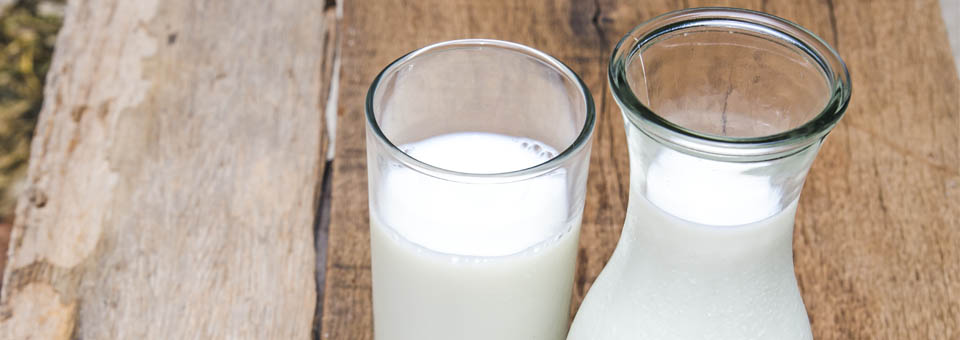Alternative milks are little more than flavored water.
Take almond milk… it contains more water, sweeteners, thickeners and additives than actual almonds.
In fact, this “milk” only contains about 2% almonds in the average carton — that’s about a handful of nuts.
And it’s really expensive!
Two ounces of almonds costs around 40 cents. But a half-gallon of almond milk is close to $4. It’s no wonder these fake milks are a “cash cow” for Big Food. Sales of this water have shot up 60% in the past five years. The market for non-dairy milk is now more than $2 billion a year.
The food industry wants you to think they’re way healthier for you than real milk.
But the truth is these milks don’t do a body good.
That’s why I recommend my patients stick with real milk that comes from grass-fed cows.
I come from a family of farmers and milk was a staple beverage when I was growing up. And I believe it’s a fraud to call this stuff milk. You don’t get the same protein, fat, calcium or vitamin D that comes with fresh milk and cream from grass-fed cows. And using these fake milks can set you up for some serious health problems…
A new study in the British Journal of Nutrition found that people who use these drinks in place of milk may be at risk of iodine deficiency.1
Researchers from the University of Surrey tested 47 different non-dairy milks made from almonds, rice, soy and hemp. They found that most of them had only about 2% of the iodine found in real milk.
Your body needs iodine to make thyroid hormones. If you don’t get enough you can develop ugly, painful swelling of the thyroid gland called a goiter.
Low iodine is also
linked to obesity, cognitive impairment, psychiatric disorders, depression, fibromyalgia and a variety of cancers including breast cancer.2 It can trigger irregular heartbeat, osteoporosis and muscle-wasting.3 And iodine is critical for brain-development in infants.In today’s toxic world, you need even more iodine than ever before. Toxins like chlorine, fluoride, bromine and perchlorate (jet fuel) bind to receptors inside your cells that are meant for iodine. They block your ability to absorb and use the iodine from your food.4
It’s easy to test yourself at home for an iodine deficiency. Just take your temperature by mouth when you wake up every morning. If it’s consistently below 97 degrees, you probably have low iodine levels.
To confirm it, ask your doctor for a 24-hour “urine iodine challenge test.”
For this, you take a large dose of iodine and then collect your urine for 24 hours afterward. If you’re low, your body will hold onto the iodine. If you already have enough, your body will dump the excess in your urine.
Your body can’t make iodine. You have to get it from external sources. And, if possible, it’s always best to get nutrients from food.
I advise my patients to get at least 300 mcg of iodine every day for optimal thyroid health. The table below shows my top 10 iodine-rich foods:
 |
The 3 Supplements I Recommend to Boost Your Iodine Today
Most of my patients find it difficult to get enough iodine from food. So unless you really love seaweed, you’ll have to supplement.
- Get your seaweed in a supplement. I recommend kelp tablets to my patients. You can buy them at most health food stores. Start with 325 mcg per day and increase it slowly.
- If the seaweed supplements aren’t for you, try iodine supplements instead. I recommend Iodoral tablets. They contain 5 mg of iodine and 7.5 mg of potassium iodide. Take one or two tablets a day.
- On top of iodine, I recommend adding selenium. Your body needs it to use iodine.5 Make sure you get at least 200 mcg of selenium every day.
I also suggest fresh, freeze-dried or aged garlic to my patients. It contains a bioactive form of selenium. Start with one capsule or clove and slowly increase to three capsules or cloves after each meal. Or eat two Brazil nuts every day. Each has around 100 mcg of selenium.
To Your Good Health,
![]()
Al Sears, MD, CNS
1. Bath S, et al. “Iodine concentration of milk-alternative drinks available in the UK in comparison with cows’ milk.” British Journal of Nutrition. 2017;118(7):525-532.
2. Verheesen RH, Schweitzer CM. “Iodine deficiency, more than cretinism and goiter.” Med Hypotheses. 2008;71(5):645-8.
3. Laurberg P, Nohr SB, Pedersen KM, et al. “Thyroid disorders in mild iodine deficiency.” Thyroid. 2000;10(11):951-63.
4. Greer MA, Goodman G, Pleus RC, Greer SE. “Health effects assessment for environmental perchlorate contamination: the dose response for inhibition of thyroidal radioiodine uptake in humans.” Environ Health Perspect. 2002;110(9):927-37.
5. Cann SA, van Netten JP, van Netten C. “Hypothesis: iodine, selenium and the development of breast cancer.” Cancer Causes Control. 2000;11(2):121-7.

